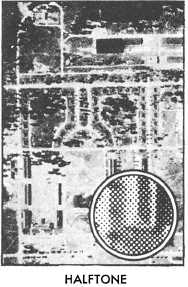CHAPTER 8
COPYING
The term copying, as used in photography, means
producing a photograph from a photograph, map,
painting, or similar flat document. A document that is
copied is called the “copy original” or “original,” and
the products of the copying process are called
“reproductions*’ or “copies.” Originals are broadly
classed as reflection originals and transparent originals.
The photographic reproduction can be any size in
relation to the original document.
Copying is a large and important part of naval
photography. It provides an important service to most
every aspect of the Navy-from the Intelligence
Specialist giving a training lecture, to the admiral who
needs 100 copies of a map for planning an invasion.
Photographic copying is an accurate, inexpensive,
and quick way of reproducing originals. Copying is
skilled work and you must give it the same careful
attention that you give to other types of photography.
Making good photographic copies is an
accomplishment any photographer can be proud of. A
knowledge of copying techniques extends your skill as
a Navy photographer and makes you more useful to
yourself and the Navy.
The process of copying is complicated by the
extensive variation in the type of originals to be copied
and the varying conditions under which the work is
done. The materials to be copied range from simple line
drawings to transparencies that are used daily aboard
ship and at shore stations. Films used for copy
photography are processed much the same as films for
other photography. They can be processed by hand, in
trays and tanks, or processed by machine.
COPY TERMINOLOGY
Copying–Photographing flat documents, such as
photographs, drawings, blueprints, charts, and so
forth.
Original–Material from which copies are made, such as
handwritten copy, typed copy, printed matter,
tracings, drawings, and photographs.
Halftone–Reproduction by printing processes, such as
lithography of a photograph in which the gradation
of tone is reproduced by a pattern of dots and
intermittent white spaces, caused by interposing a
halftone screen between the lens and the film. (See
fig. 8-1.)
Figure 8-1.–Comparison of continuous tone, line, and halftone.
8-l






